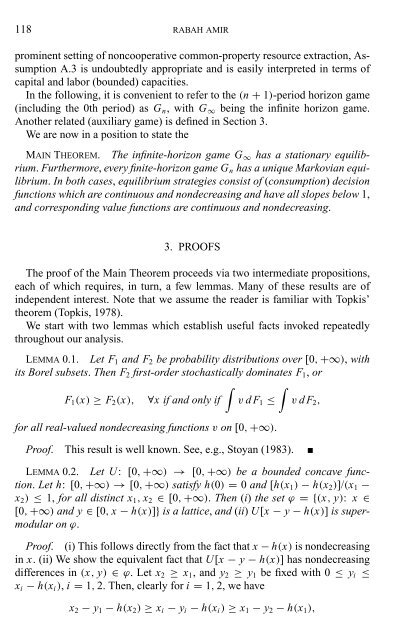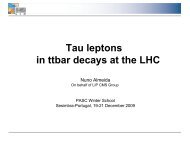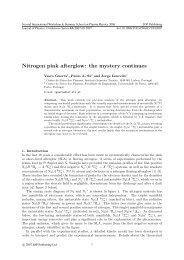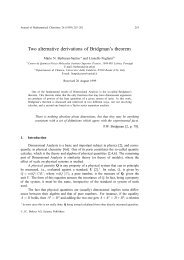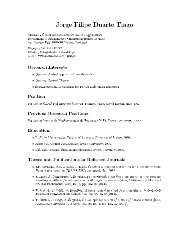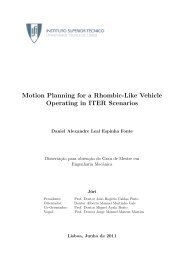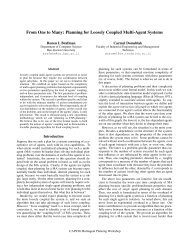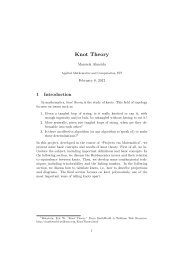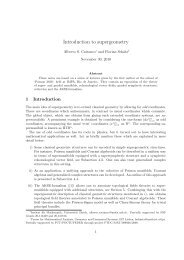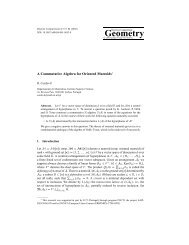Cournot Oligopoly and the Theory of Supermodular Games
Cournot Oligopoly and the Theory of Supermodular Games
Cournot Oligopoly and the Theory of Supermodular Games
Create successful ePaper yourself
Turn your PDF publications into a flip-book with our unique Google optimized e-Paper software.
118 RABAH AMIRprominent setting <strong>of</strong> noncooperative common-property resource extraction, AssumptionA.3 is undoubtedly appropriate <strong>and</strong> is easily interpreted in terms <strong>of</strong>capital <strong>and</strong> labor (bounded) capacities.In <strong>the</strong> following, it is convenient to refer to <strong>the</strong> (n + 1)-period horizon game(including <strong>the</strong> 0th period) as G n , with G ∞ being <strong>the</strong> infinite horizon game.Ano<strong>the</strong>r related (auxiliary game) is defined in Section 3.We are now in a position to state <strong>the</strong>MAIN THEOREM. The infinite-horizon game G ∞ has a stationary equilibrium.Fur<strong>the</strong>rmore, every finite-horizon game G n has a unique Markovian equilibrium.In both cases, equilibrium strategies consist <strong>of</strong> (consumption) decisionfunctions which are continuous <strong>and</strong> nondecreasing <strong>and</strong> have all slopes below 1,<strong>and</strong> corresponding value functions are continuous <strong>and</strong> nondecreasing.3. PROOFSThe pro<strong>of</strong> <strong>of</strong> <strong>the</strong> Main Theorem proceeds via two intermediate propositions,each <strong>of</strong> which requires, in turn, a few lemmas. Many <strong>of</strong> <strong>the</strong>se results are <strong>of</strong>independent interest. Note that we assume <strong>the</strong> reader is familiar with Topkis’<strong>the</strong>orem (Topkis, 1978).We start with two lemmas which establish useful facts invoked repeatedlythroughout our analysis.LEMMA 0.1. Let F 1 <strong>and</strong> F 2 be probability distributions over [0, +∞), withits Borel subsets. Then F 2 first-order stochastically dominates F 1 , or∫ ∫F 1 (x) ≥ F 2 (x), ∀x if <strong>and</strong> only if v dF 1 ≤ vdF 2 ,for all real-valued nondecreasing functions v on [0, +∞).Pro<strong>of</strong>. This result is well known. See, e.g., Stoyan (1983).LEMMA 0.2. Let U: [0,+∞) → [0, +∞) be a bounded concave function.Let h: [0,+∞) → [0, +∞) satisfy h(0) = 0 <strong>and</strong> [h(x 1 ) − h(x 2 )]/(x 1 −x 2 ) ≤ 1, for all distinct x 1 , x 2 ∈ [0, +∞). Then (i) <strong>the</strong> set ϕ ={(x,y):x∈[0, +∞) <strong>and</strong> y ∈ [0, x − h(x)]} is a lattice, <strong>and</strong> (ii) U[x − y − h(x)] is supermodularon ϕ.Pro<strong>of</strong>. (i) This follows directly from <strong>the</strong> fact that x − h(x) is nondecreasingin x. (ii) We show <strong>the</strong> equivalent fact that U[x − y − h(x)] has nondecreasingdifferences in (x, y) ∈ ϕ. Let x 2 ≥ x 1 , <strong>and</strong> y 2 ≥ y 1 be fixed with 0 ≤ y i ≤x i − h(x i ), i = 1, 2. Then, clearly for i = 1, 2, we havex 2 − y 1 − h(x 2 ) ≥ x i − y i − h(x i ) ≥ x 1 − y 2 − h(x 1 ),


